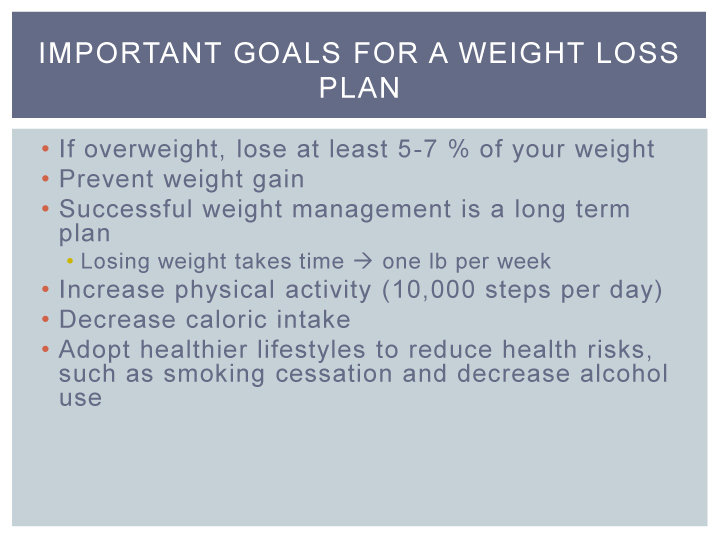Learn the importance of weight management
Weight management is a critical part to living a healthier lifestyle. In this presentation you will learn about BMI, how physical activity can lower your weight and reduce your risk for additional diabetes related complications and much more.
Dealing with your own blood sugar levels is really important to feeling in good physical shape and therefore avoiding prolonged issues of all forms of diabetes. Many individuals have the ability to take control of their blood sugar levels with eating and working out alone. Some others will need to use insulin or maybe supplementary medical treatments together with lifestyle improvements. Either way, monitoring your own blood glucose levels is an imperative part of your treatment program.
In the event that you’ve just received a diagnosis of diabetes, monitoring your own blood sugar levels may seem like an overwhelming job, but after you learn how to evaluate your actual glucose levels and consequently know how very important it really is, you’ll truly feel more comfortable with the process and more in control of your own health issues. Testing is crucial because it guides you on if you’re keeping your own glucose levels in the range you along with your medical doctor have agreed upon.
The appropriate range for you is influenced by your get older along with the type of diabetes you actually have. For younger men and women who don’t have complications of diabetes, an average target range is likely to be 80 to 120 mg/dL before meals, and below 180 mg/dL after eating. More mature adults which have complications from their disease could have a fasting target goal of 100 to 140 mg/dL and below 200 mg/dL after meals. That’s because blood sugar levels that declines too low in mature adults could be far more hazardous than in the younger folks.
A home blood glucose test measures the amount of a type of sugar, called glucose, in your blood at the time of testing. The test can be done at home or anywhere, using a small portable machine called a blood glucose meter.
Home blood sugar testing can be used to monitor your blood sugar levels. Talk with your doctor about how often to check your blood sugar. How often you need to check it depends on your diabetes treatment, how well your diabetes is controlled, and your overall health. People who take insulin to control their diabetes may need to check their blood sugar level several times a day. Testing blood sugar at home is often called home blood sugar monitoring or self-testing.
If you are using an insulin pump or if you use insulin more than once a day, the American Diabetes Association ( ADA ) recommends testing your blood sugar 3 or more times every day. If you use insulin rarely or don’t use it at all, blood sugar testing can be very helpful in learning how your body reacts to foods, illness, stress,exercise, medicines, and other activities. Testing before and after eating can help you adjust what you eat.




